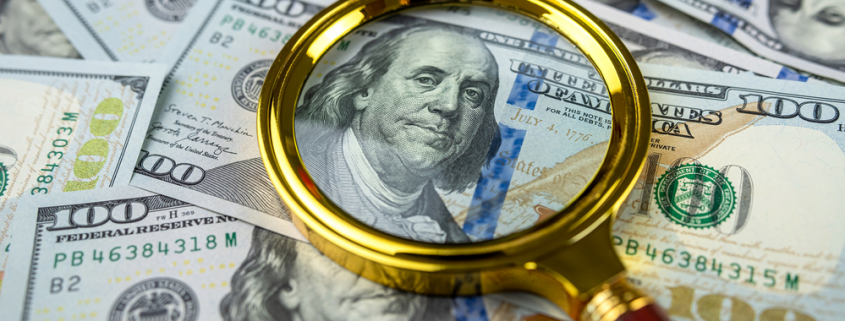6 Ways to Spot Fake Money and Protect Your Small Business
When a rash of fake money found its way into an Oregon community it left residents and many small business owners holding the bag. Cautionary tales provides a good reminder to provide information and training to employees in how to spot counterfeit currency.
Fake Money – Is Your Business At Risk?
Counterfeit Currency Scams a Good Reminder – US Small Business Owners Need to Know How to Spot Counterfeit Bills
Can you (and your employees) spot fake money?
Residents selling items on Craigslist in the Corvallis, Oregon area fell victim to thieves using counterfeit $20 bills to purchase electronic devices. Though two of the suspected counterfeiters have already been arrested, the incident serves as a good reminder to all—including small business owners—of how important it is for employees to know how to spot a fake.
In another example, in 2014, a Richmond, Virginia-based hairstylist and janitor produced (and distributed) between $10,000 and $20,000 in fake bills over the course of two years. She took $5 bills and soaked them in a degreaser, scrubbed off the ink with a toothbrush, and let them dry. Then she used a Hewlett-Packer inkjet printer to print images she’d scanned of $50 and $100 notes onto the blank bills. Technology was also a key player when a Lawndale, California resident put more than $7 million in fake bills into circulation between 2004 and 2008. He pulled it off, in part, using ink jet and laser printers purchased from a local Staples store. (Mental Floss)
In fact, more than $147 million (and as much as $200M) in fake U.S. currency is circulating globally (according to the most recent data available from the U.S. Secret Service), and roughly 60 percent of that is circulating in the United States itself. In the U.S., the $20 bill is the most common counterfeit denomination, but the $100 bill is the most common outside of the United States. (CNBC)
The US Secret Service shares how to spot fake currency in their “Know Your Money” pdf, including key differences in the portrait of the president or statesman on the bill, differences in the Federal Reserve and Treasury Seals, differences in the printed borders, differences in serial numbers and in the paper itself, including photos.
Download the Know Your Money pdf to email or print out to share with your staff.
Another way that scammers try to fool unsuspecting sellers is by using real money but altering the denomination (called “Raised Notes”). It would be easy for cashiers in a fast-paced setting to quickly scan the denomination numbers on the corners but fail to notice that the portrait and words don’t match.
Training clerks, cashiers, wait staff and others who accept money in your organization to review these key areas can help them spot fake currency before counterfeit money scams result in theft from your organization.
6 Ways to Spot Fake Money and Protect Your Business
A wikihow article provides detailed instructions for evaluating money to see if its counterfeit. You could easily take the steps they recommend and turn it into an internal training session for employees and incorporate this training into new hire training and employee policy and procedure manuals.
They recommend these steps for detecting counterfeit money:
- Feel the texture of the bill (people who handle good money on a regular basis can often feel the difference in the paper itself between real money and counterfeit bills)
- Did you know? All denominations of US currency, with the exception of $1 and $2 dollar bills, have been redesigned at least once since 1990; compare the bill with another of the same denomination and series.
- Compared to real US currency, fake bills are often flat, lack detail, and have poor print quality—look for blurry areas, especially in detailed printing areas such as borders.
- All US paper money has tiny red and blue fibers embedded in the paper. Counterfeiters try to replicate this by printing red and blue onto the paper.
- Check the serial numbers. Serial numbers on a single bill should match, be evenly spaced, and be clearly printed. However, serial numbers are unique to each bill; if you receive multiple bills with the same serial number, they’re counterfeit!
- Look for security features in all denominations (except $1 and $2 dollar bills). The list of security features included on $5, $10, $20, $50, or $100 can all be found in step 3 on the wikiHow article page, as can more detail about each of the recommended steps and photos that could enhance your employee training materials.
If you do fall victim to a scammer and end up with counterfeit money, you should hand it over to the U.S. Department of Homeland Security. When you hand in the counterfeit note, fill out the Department of Homeland Security’s Counterfeit Note Report at http://www.secretservice.gov/forms/ssf1604.pdf.
Once a note is handed in with this form, it is considered counterfeit unless proven otherwise. Unfortunately, if you do receive counterfeit currency, you will not be reimbursed for handing it in, so you need to ensure that your team is up to date on best practices for spotting counterfeit money.

